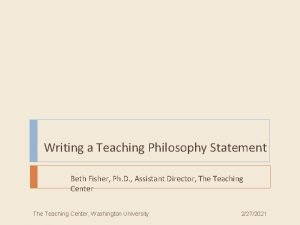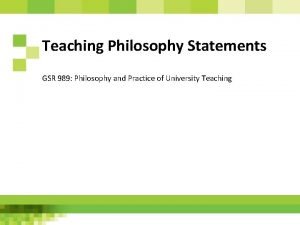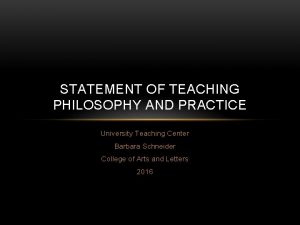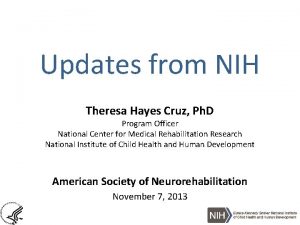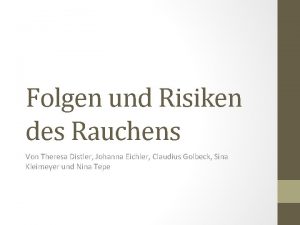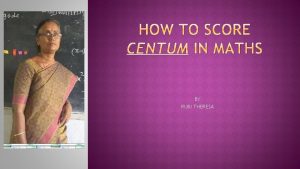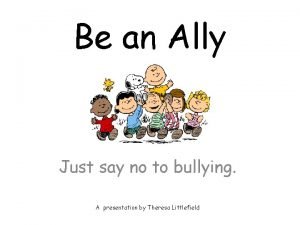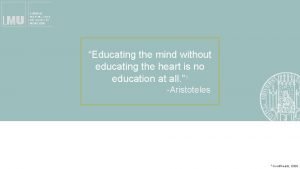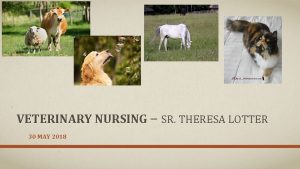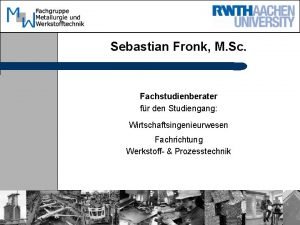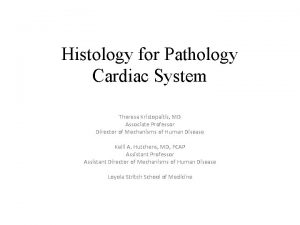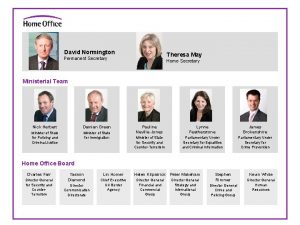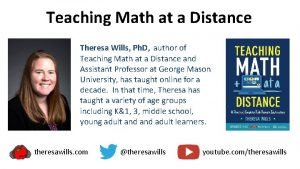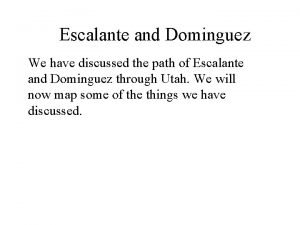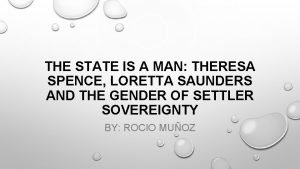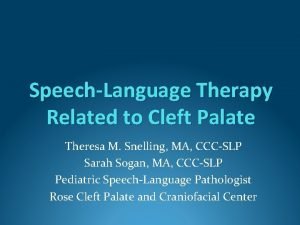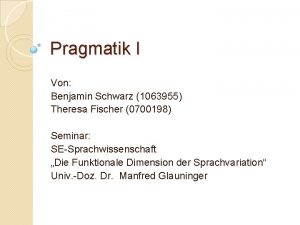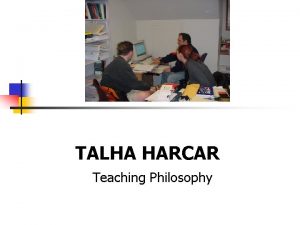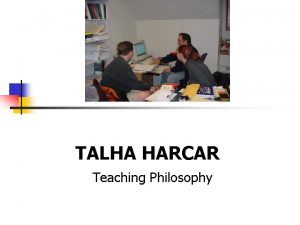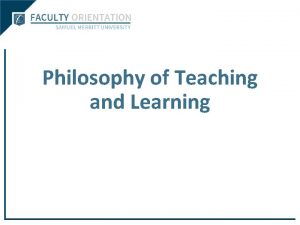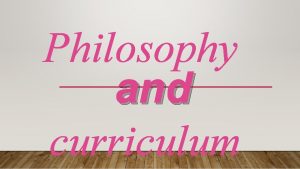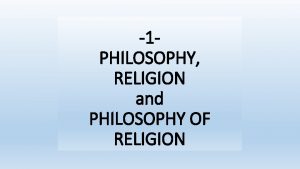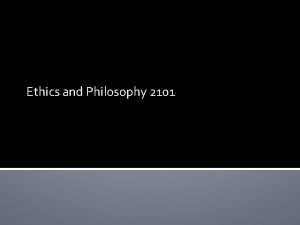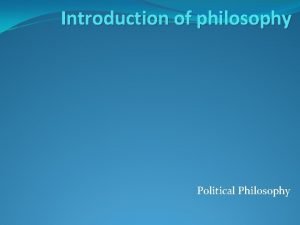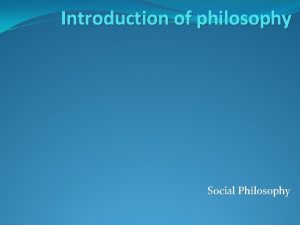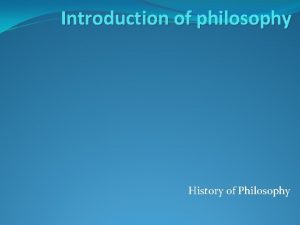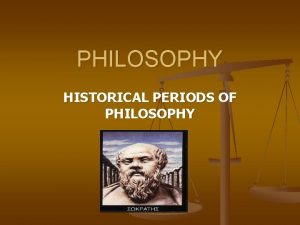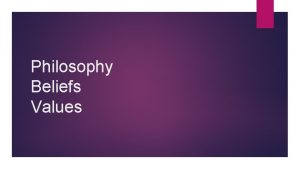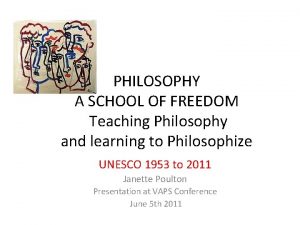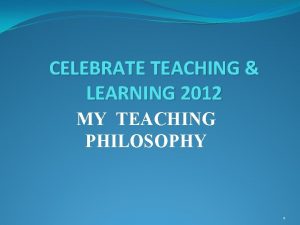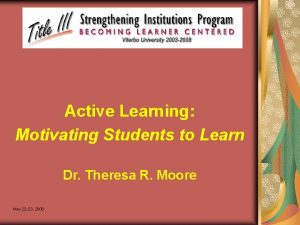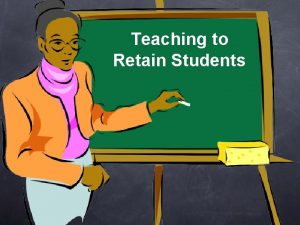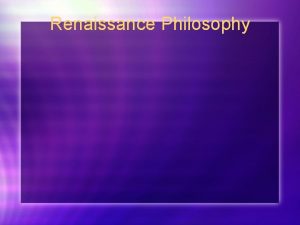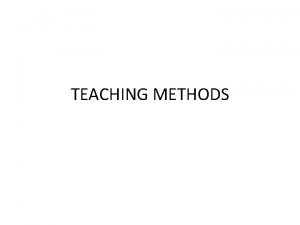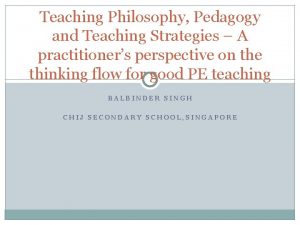Theresa Frasers Teaching and Learning Philosophy Students and




























- Slides: 28

Theresa Fraser’s Teaching and Learning Philosophy Students and Teachers learn collaboratively when in community.

Teaching and Learning Philosophy Student The Teaching Process The Learning Process Classroom Environment Teacher

The Student My philosophy begins with my students. All students come to the classroom with varied goals, motivations, strengths, life experience, background (foundation) learning, talent, ability and intelligences (spatial, linguistic, logical-mathematical, body kinesthetic, musical, interpersonal, intrapersonal, naturalistic). I need to learn who they are as individuals and as a group.

Interest and attention impacts the student’s ability to grasp material. A post secondary classroom is not a movie or stage show but it helps to be engaging. It is important to help students to connect what you are teaching with why you are teaching it. This provides purpose to the learning.

4 Prompts that engage “Identify one important concept, research finding, theory, or idea … that you learned while completing this activity. ” “Why do you believe that this concept, research finding, theory, or idea … is important? ” Taken from: Weimer, M. (AUG. , 2013)Prompts That Get Students to Analyze, Reflect, Relate, and Question. Faculty Focus

“Apply what you have learned from this activity to some aspect of your life. ” “What question(s) has the activity raised for you? What are you still wondering about? ”

Creating Learner Centred Classrooms I believe that teacher’s encourage competency, mastery and support transformational learning when they create/support learner centred communities.

The Classroom I strive to create a classroom environment that is anti-oppressive, safe, engaging, challenging and respects the needs of all students. A classroom includes online, building spaces as well as community spaces.

The Classroom This is a place where questions will be fostered answered(or at least attempted). Each student’s learning process (and my own) is recognized as a process not an end result.

Students do not all learn the same way. Student’s do not all understand how they learn. It is the Professor’s job to help students identify how they learn so they can meet lesson/course/program learning objectives as well as learn what they want to learn. This is a journey not an event.

I need to have subject –matter knowledge, talent and refined teaching skills (that I am always trying to improve). Teaching for me is like Theraplay- Engagement, Structure, Nurture and Challenge.

Why do I teach? I had mentors that encouraged me when I was given the message that I wasn’t smart or worthy. I feel like I have a responsibility to “pay it forward”. If I support , teach and mentor clinicians so they can help others. This is a picture that I Found after another Faculty member told me that teaching was like making ripples.

What does good teaching mean to me? Good teaching for me is teaching where students have demonstrated that they have met the learning objectives and challenged the teacher to teach more. The following questions were taken from the following article. Chapnick, A. (2009)How to Write a Philosophy of Teaching and Learning Statement. Madison: Wisconson. Magna Publications.

Do I have a particular teaching style or approach? If so, how would I describe it? My teaching is relational. I want to get to know my students, learn their names, find out why they are motivated to learn, and what they want to learn.

What makes me unique as a teacher? What makes me a unique teacher is what I bring to the classroom. This includes my front line experience, my education, my personality and my hopes and dreams and my willingness to learn about their experience, personalities, hopes and dreams.

What do I expect from my students? I expect my students to be honest about what they want to learn and to be honest with themselves. I expect my students to try their very best. I hope that I will have earned the trust of my students.

What can my students expect from me? My students can expect that I will act with integrity, honesty, passion for teaching and a commitment to supporting their success.

What can I do to improve? I seek feedback from students and colleagues. I engage in reflective practice. I seek ongoing formal and informal professional development opportunities both in content and teaching. I seek challenges.

Critical Thinking I want to model and teach critical thinking by helping my students: • Identify a problem or issue • Have a voice • Establish a clear perspective on an issue or concept learned • Recognize alternative perspectives (divergent thinking) • Recognize fundamental assumptions that are implicit in or stated by the representation of the concept taught • Identify and evaluate the “evidence” • Look at the issue within the context by which it appears • Assess implications and potential conclusions • Come up with creative problem solving options(LEAP Skills)

Leap Skills Torrance Incubation Model

The Learning Process Learners have preferences about how they learn which can be independent of both their ability and the content of lessons but these preferences have meaningful implications for their learning. If possible, it is important to help students learn in a way that is successful for them.

Learning is improved by matching the mode of instruction to the preferred learning style of the student (s). Warm up activities , power points, video/audio clips, case study, group discussion, lecture, activities, PLAY and frequent assessment (prior to evaluation). I try to match my teaching presence with the needs of the students but always using assessment to understand how they are learning and if they have learned the “what”.

• • Stop /start/continue Exit cards What’s the headline? Think/pair/share

Outcome based learning Lesson learning Outcomes contribute to course learning outcomes. Course learning outcomes contribute to program based learning outcomes. Outcome based learning reflects what I expect my student’s to learn versus what I will teach.

The Assessment Process needs to have varied and realistic summative and formative assessment strategies. This enables my students to demonstrate their understanding of the course content and objectives. These can include individual and group observation, discussion, written tests, papers, presentations, role-plays, and debates.

Authentic Assessment Where possible I like to integrate authentic assessment into my curriculum so students have the opportunity to reflect on their interventions/decisions and also gain practice providing peers with strength based feedback. .

Authentic Assessment- Continued Examples include: simulations, activities that they would utilize in the field. In order to provide strength based feedback they need to be taught this skill and have opportunities for practice.

Pratt- Teaching Perspectives Inventory Results Apprenticeship “Good teachers are highly skilled practitioners at what they teach”. Transmission “Effective teaching requires a substantial commitment to the content or subject matter”.
 Sample philosophy of teaching
Sample philosophy of teaching Teaching philosophy examples
Teaching philosophy examples Teaching philosophy examples
Teaching philosophy examples Western philosophy of education
Western philosophy of education Philosophy of education realism
Philosophy of education realism Western electric rules
Western electric rules Teaching philosopies
Teaching philosopies Theresa cruz nih
Theresa cruz nih Theresa haider
Theresa haider Doc distler
Doc distler U[lhk
U[lhk Just say no to bullying
Just say no to bullying Theresa henzel
Theresa henzel Sr theresa lötter
Sr theresa lötter Rwth aachen informatik studienplan
Rwth aachen informatik studienplan Epicardium
Epicardium Theresa lotter
Theresa lotter Theresa manyan
Theresa manyan Sr theresa lotter
Sr theresa lotter Teaching math at a distance
Teaching math at a distance Theresa rowland
Theresa rowland Dr theresa escalante
Dr theresa escalante Theresa spence scotland.
Theresa spence scotland. Theresa snelling
Theresa snelling Repräsentativa
Repräsentativa Theresa brunasso
Theresa brunasso First favorite novel of rizal
First favorite novel of rizal Cuadro comparativo e-learning m-learning b-learning
Cuadro comparativo e-learning m-learning b-learning Scale down teaching
Scale down teaching
